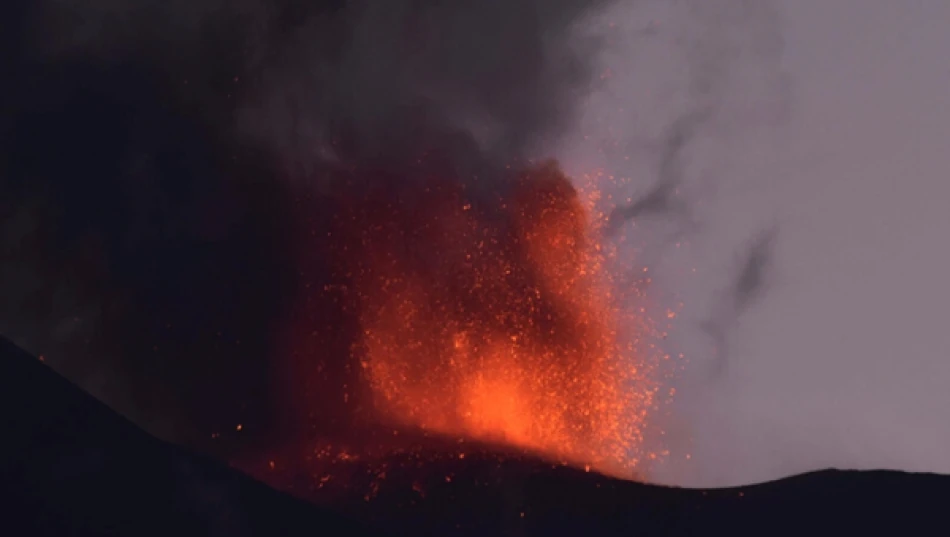
Mount Etna Erupts in Sicily, Prompting Air Travel Precautions
Mount Etna Erupts Again as Italy Raises Aviation Alert to Highest Level
Sicily's Mount Etna has erupted once more, spewing dense clouds of volcanic ash from its summit craters and prompting Italian authorities to raise aviation alert levels to maximum. While Catania International Airport remains operational for now, the eruption underscores the ongoing challenge of managing air traffic around one of the world's most active volcanic zones.
Latest Eruption Details
The Italian Institute of Geophysics and Volcanology announced Monday that Europe's largest active volcano had begun a fresh eruptive phase, with thick ash plumes rising from multiple summit craters. The exact height of the ash column could not be determined by Monday evening, indicating the dynamic and unpredictable nature of the eruption.
Standing at over 3,300 meters above sea level, Mount Etna's towering presence dominates the eastern coast of Sicily. The volcano's latest activity follows its characteristic pattern of regular eruptions, which have made it both a subject of intense scientific monitoring and a spectacular natural attraction.
Aviation Industry on High Alert
Immediate Flight Disruption Risks
Italian aviation authorities have implemented the highest alert level for air traffic, a precautionary measure that reflects lessons learned from previous volcanic disruptions. The 2010 Eyjafjallajökull eruption in Iceland demonstrated how volcanic ash can paralyze European airspace for days, costing airlines billions in losses and stranding millions of passengers.
Catania International Airport, Sicily's busiest aviation hub located just 50 kilometers from Etna's base, continues normal operations under close monitoring. However, the situation could change rapidly if wind patterns shift ash clouds toward major flight corridors.
Economic Implications for Regional Tourism
The eruption presents a double-edged sword for Sicily's tourism sector. While volcanic ash can disrupt travel plans and damage infrastructure, Etna's spectacular displays historically draw thousands of volcano enthusiasts and photographers. The island's tourism industry has developed resilience strategies around the volcano's regular activity, with specialized tour operators offering safe viewing experiences during moderate eruptions.
Scientific Monitoring and Predictability
Mount Etna's behavior sets it apart from more unpredictable volcanic systems worldwide. Its frequent eruptions—sometimes occurring multiple times per year—have made it one of the most studied volcanoes globally. This constant activity, while occasionally disruptive, actually reduces the likelihood of catastrophic explosive eruptions by regularly releasing built-up pressure.
The continuous monitoring system surrounding Etna includes seismic networks, gas analyzers, and thermal cameras that provide real-time data to volcanologists. This infrastructure allows authorities to issue timely warnings and adjust safety protocols as eruptions develop.
Broader Context of European Volcanic Activity
Etna's latest eruption occurs against a backdrop of increased volcanic activity across the Mediterranean region. Italy's volcanic triangle—including Vesuvius near Naples and Stromboli in the Aeolian Islands—requires constant vigilance from geological monitoring services.
Unlike the devastating potential of Vesuvius, which threatens densely populated areas around Naples, Etna's location and eruption style generally pose manageable risks. The volcano's effusive nature typically produces lava flows rather than explosive pyroclastic flows, giving authorities and residents time to respond appropriately.
The current eruption reinforces Mount Etna's status as both a natural wonder and a reminder of the dynamic geological forces shaping the Mediterranean. While immediate risks appear contained, the situation demonstrates the ongoing need for robust monitoring systems and flexible response protocols in volcanic regions.
Most Viewed News

 Layla Al Mansoori
Layla Al Mansoori






